Developing disease-specific BBB-penetrating AAV vectors
Developing disease-specific BBB-penetrating AAV vectors
Promising Gene Therapy Pathways for Combating Central Nervous System Diseases
By Dr. Zhigang He
Zhigang He, PhD, BM
Research Associate, Boston Children’s Hospital
Professor of Neurology and Ophthalmology, Harvard Medical School
Director of the Boston Children’s Hospital Viral Core
Member: Intellectual and Developmental Disabilities Research Center (IDDRC)
Research Focus: Axon regeneration and function recovery after brain and spinal cord injury.
With the advent of experimental models and new technologies, tremendous progress has been made in delineating the molecular mechanisms underlying pediatric and adult neurological diseases. As a result, many new genes/pathways are suggested as potential therapeutic targets. However, translating these molecular advances into treatments remains challenging. For example, injuries to the central nervous system (CNS) damages neuronal tissues and also trigger scar formation. Preclinical studies aimed at repairing CNS injuries have identified multiple genetic targets and small molecule compounds that can promote axon regeneration or reduce scar formation. However, these exciting findings have remained far from clinical applications. One of the prominent obstacles is the blood brain barriers (BBB), which limits the penetration of orally or systematically administrated drugs into the CNS.
In this regard, developing efficient BBB-penetrating recombinant AAV vectors will greatly enable gene therapy for CNS diseases. In 2009, AAV9 was shown to be able to cross BBB, resulting in widespread transduction in the CNS, particularly in neonatal animals (Foust et al., Nature Biotechnology 2009). This insight has led to the successful gene therapy for pediatric neurological disease such as the spinal muscular atrophy. However, the BBB-penetrating ability of existing AAV vectors becomes diminished after neonatal stage. Furthermore, the doses used for treatments are extremely high in order to achieve sufficient CNS expression and causing side effects start. Thus, it is important to design more efficient strategies to screen for BBB-penetrating vectors.
BBB consists of endothelial cells normally connected by tight junction, which are surrounded by basal membrane and astrocytes and pericytes. For a viral vector in circulating blood to enter the brain, it has to cross this barrier, either by going through capillary endothelial cells (via passive or active transport), or by passing in between endothelial cell (in the case of breakdowns of the tight junctions). Inspired by AAV9, numerous efforts in academia and industry are competing to develop novel viral vectors with engineering approaches. There are some neat progresses. For example, the AAV-PHP.B vector induced a transgene expression in the CNS at least 40-fold greater than the parental AAV9 capsid when injected intravenously (Deverman et al., Nat. Biotechnology 2016). However, AAV-PHP.B appears to be only effective in crossing mouse BBB, due to the unique expression of a receptor in mouse endothelial cells.
For repairing CNS injuries, since tissue damage and scar formation occur in the lesion site, an ideal gene therapy strategy is to selectively target the cells at or near injury, while sparing intact tissues. This might be possible because it is well known that BBB is compromised in many types of neurological diseases. For example, in multiple sclerosis, BBB breakdown precedes symptoms and other signs of lesions detected by MRI (Kermode et al., Brain 1990). Thus, the question becomes whether we can take advantage of disease-associated BBB reorganization to achieve specific targeting of injured/compromised CNS regions. Using mouse spinal cord injury (SCI) models, we have shown that this is achievable (Brommer et al., Nature Comm 2021).
We asked whether the compromised BBB in injured spinal cord could allow all viral vectors of similar sizes to penetrate the broken BBB, or whether it only allows certain types of viral vectors to cross. To address this, we injected GFP-expressing AAVs of a dozen of different serotypes into the blood of the mice with SCI, and found that only 3 serotypes, AAV9, AAV10 and AAV7, resulted in efficient GFP expression in nearly all cell types in and near the injury site, but not in the other intact parts of the CNS. Such serotype selectivity is unexpected, because it suggested that certain injury-altered features, rather than “totally BBB disruption ”, enabled specific AAVs to enter the injured spinal cord. The nature of such injury induced BBB alterations remains to be investigated, and we know such alterations are only transient. Intravenously injected AAVs efficiently enter injured spinal cord only in the first three days after injury, suggesting a time window for delivering potential treatments. In a proof-of-concept study, we used this method to modify the activity of a population of spinal cord neurons with 3 days of SCI and found that paralyzed mice regained stepping ability.
Looking forward, our result suggests a new paradigm for developing gene therapy strategies. Instead of focusing on the entire BBB, developing AAVs for diseased CNS regions might offer more selected targeting with reduced side effects. It is conceivable that many different molecular mechanisms could account for BBB alterations associated with specific pathological conditions, including those relating to intellectual and developmental disabilities. Further investigation of these mechanisms should lead to the development of disease-tailored gene therapy vectors, which should facilitate the bench to clinic translations.
Learn more about how BCH’s IDDRC accelerates IDD research in neurobiology
Learn about BCH’s Viral Core



